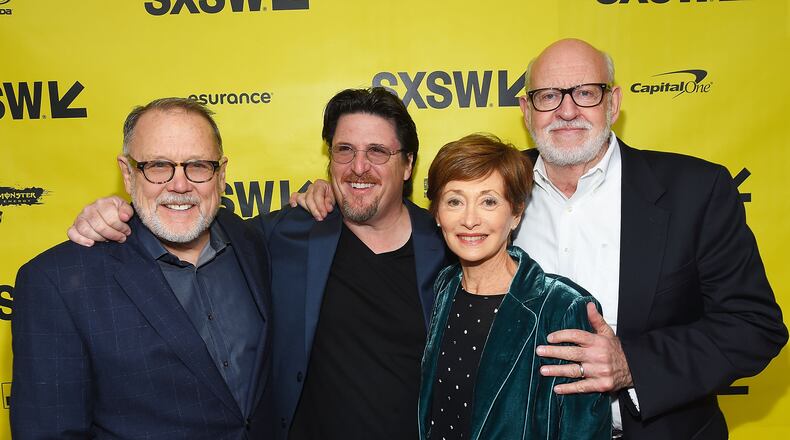In 1978 “The Muppets” was the most-watched television show in history with 235 million viewers in 102 countries.
That same year, Jim Henson and Kermit the Frog, one of his most famous creations, took a trip to Atlanta to cut the ceremonial ribbon at the newly opened Center for Puppetry Arts.
Henson remained a supporter of the Center for Puppetry Arts until his death in 1990. In 2015, following a donation of 500 puppets and artifacts from Henson’s family and a $14 million expansion, the Center became home to the largest collection of Muppets and the only permanent exhibit dedicated to Jim Henson.
Related: Puppetry center announces $14 million expansion for Henson, international collections
Visitors to Puppetry Arts get an up-close look at the beloved creations of Henson. There are sketches of Muppets, puppet making materials to touch and other items from Henson’s personal collection including his desk, a recreation of his office and a stained glass window of Kermit from Henson’s townhome in New York.
The only thing missing are the puppeteers who brought all of those characters to life. But this month, a documentary featuring five of the original puppeteers pays tribute to Henson’s legacy and reveals how all those famous characters evolved.
“Muppet Guys Talking” features Frank Oz (Cookie Monster, Grover, Bert, Miss Piggy, Fozzie Bear, Animal and more); the late Jerry Nelson ( Count von Count, Snuffleupagus, Uncle Statler, Gobo Fraggle and more); Dave Goelz (Gonzo, Dr. Bunsen Honeydew and more); Fran Brill (Zoe, Prairie Dawn and more) and Bill Barretta (Swedish Chef, Pepe the Prawn, Rowlf the Dog and more).
In the film, which is available for $10 online only at Muppetguystalking.com, the five puppeteers share memories of their time working with Henson.
One of the greatest misconceptions about their jobs, they said, is that they only do the voices...or that they don’t do the voices at all.
From the characters Henson sketched to the puppet makers who made them to the puppeteers who brought them to life and the writers who gave them words, Henson managed to create an environment where collaboration was supported and encouraged, they said. He enjoyed when they pushed the boundaries.
For Goelz, Gonzo’s journey from loser to nutcase to soulful mirrored his own growth and development, he said.
Piggy was full of bravado, but it was all a cover for her pain which ultimately made her funny, Oz said.
Henson set the standard for hard work, said Nelson. He recalled a plane flight they once shared during which Henson worked the entire time. “That is what it takes to run anything, to be the boss. To make happen what you want to happen,” said Nelson, who died in 2012.
Henson asked a lot of the people he hired -- sometimes they worked all night on scenes and occasionally they found themselves in frightening situations -- but he never asked them to do anything he wasn’t willing to do himself.
In 1979, for a scene of “The Muppet Movie” in which Kermit sings Rainbow Connection, Henson sat underwater in a sealed steel canister in order to film Kermit singing on a log.
Brill, the first female puppeteer Henson hired other than his wife, recalled having to wear huge platform boots and shoes at all times because at 5-feet-4 inches she was nearly a foot shorter than her fellow male puppeteers.
Henson, they said, was always low-key, self-effacing and generous. His sensitivity was reflected in the characters he created.
The Muppets were loved by both children and adults and they had special appeal to anyone who ever felt disenfranchised or different.
“It wasn’t just for entertainment only,” Oz said. “Jim wanted to make a better world.”
About the Author
Keep Reading
The Latest
Featured



